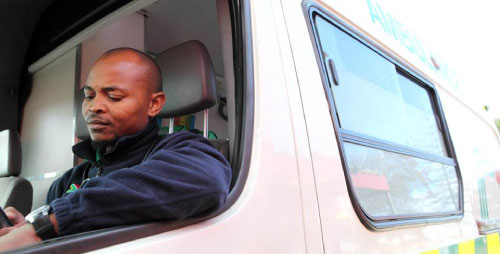In this new mobile world, it is all about location, location, location. Customers want mobile operators to support the complete range of available location-based services (LBS) applications including; personal navigation, fleet tracking, friend finder, social networking, weather feeds, news updates and more. Until now, supporting the various applications across the network was an expensive proposition available only to the largest operators. It involved multiple location node types scattered across the network — purchased, managed and maintained independently. But the challenges of location awareness — whether market- driven or mandated — are not limited to the largest networks. The solutions shouldn't be, either.
Global
Trends
It
is important to note that the market for LBS is forecasted to grow rapidly over
the next four years. Driven by an increasing number of location-enabled
applications and devices, the number of location-enabled subscribers will
expand through 2017 at a compound annual growth rate of 10 percent (ABI
Research). ABI Research analysts expect
worldwide LBS revenue to increase 92 percent by 2017 (Figure 1)
Financial Trends
It is also important to understand the financial
trends. Among wireless subscribers, 332
million used LBS solutions in 2011 and ABI Research experts expect that number
to increase to nearly 2.2 billion by 2017. ABI Research thinks most
of the international growth will come from countries in the Asia- Pacific
region, notably India and China. It
appears that the region’s subscriber numbers will grow from 1 billion in 2011 to
over 2 billion in 2017, meaning that the Asia-Pacific region will contribute
half of the world’s wireless subscribers. LBS revenues for this region, which were in third
place behind North America and Western Europe in 2009, have now surpassed
Western Europe and will nearly equal North America by 2017 (Figure 2).
Business
Benefits to Mobile Operators with LBS and Applications
LBS
applications draw in consumers, drive revenue, increase customer loyalty, and
decrease churn. LBS applications range
from simple (passive) push services, such as weather and traffic alerts, to
more complex and interactive services, such as personal safety/emergency
services, family locator, and workforce/asset locator applications. These advanced applications, which generally
require network-based location determination provided by the mobile operator,
also tend to be the applications that drive the highest value-added service
revenue and data-centric revenue. Trends indicate that many consumers who use
LBS sign up for more than one location application. Offering real-time LBS
content improves customer satisfaction which in turn increases customer
retention and average revenue per user (ARPU).
In
order to support the expanding location requirements, operators need
to enable their networks to deliver user-specific services to maximize their
market participation and at the heart of any location-enabled network is the
ability to seamlessly coordinate all location requests across the network. With the right LBS solution, operators can
easily location-enable their networks, location-enable their users, and ensure
nobody gets lost along the way.
LBS Today
and Tomorrow
The
convergence of LBS-enabled search and messaging, mobile advertising and social
networking, and powerful new smartphones is changing the way people use their
mobile devices and interact with others. These changes will enable unique and
differentiated services that will drive mobile operators’ growth and value in
the years ahead.
Mobile operators will need flexible, scalable, and
secure solutions that allow them to rapidly deliver products to market,
creating a distinct competitive advantage while achieving greater revenue.
About Cellfind
 Cellfind (Pty) Ltd, a subsidiary
of the JSE listed group, Blue Label Telecom, is a leading mobile technology
solutions company that provides tailored Location-based services, Aggregation
solutions, Mobile Applications and Value Added Services to a wide range of clients
in Southern Africa.
Cellfind (Pty) Ltd, a subsidiary
of the JSE listed group, Blue Label Telecom, is a leading mobile technology
solutions company that provides tailored Location-based services, Aggregation
solutions, Mobile Applications and Value Added Services to a wide range of clients
in Southern Africa.
Cellfind draws on a strong base of
technical skills and locally-owned intellectual property to create innovative
mobile solutions to a wide range of industries including the Financial
services, Medical, Media, and Telecommunications industries.
The company’s solutions include
amongst others SMS and MMS based solutions, USSD application solutions, WAP and
Mobile Applications, Location-based solutions (Information, Traffic and
Routing, Emergency response, Tracking) and Mobile payment solutions. These
solutions assist organisations in communicating cost-effectively and
efficiently with their employees, customers and other stakeholders, while
creating either direct cost savings and/or revenue generative opportunities for
our customers.
Cellfind, a founding member of the
Wireless Application Service Provider Association and Accredited Service
Provider for Vodacom, MTN and Cell C, continues to invest in world-class
technology that enables easy and cost effective access to our partners,
allowing us to continuously shape the landscape in the Southern African market.
For more info visit www.cellfind.co.za
About TeleCommunication
Systems, Inc.
Ranked No. 1 in the world for precise
location, our comprehensive LBS portfolio, TeleCommunication Systems, Inc.
provides one solution with all the power and versatility needed to
location-enable any network and make location a key part of any network’s value
proposition. We bring together all of the components needed to locate any user
across any type of network and deliver that location to user devices,
location-based applications, emergency responders, and public safety services
and agencies. Our complete end-to-end LBS solution includes hardware and
software to support 2G, 3G and LTE networks.
TeleCommunication Systems, Inc. has 12 years of LBS experience to help
mobile operators reduce time to market and implementation costs.
Meet Cellfind
and TeleCommunication Systems at AfricaCom, 12-14 November at Cape Town, Booth
B10C.




























